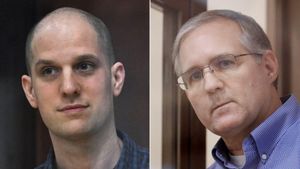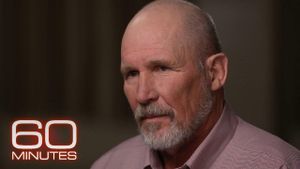A U.S. fugitive wanted for his alleged involvement in bombings linked to animal rights extremism has finally been apprehended after more than two decades on the run. Daniel Andreas San Diego, now 46, was arrested on November 25, 2024, by authorities from the U.K.'s National Crime Agency (NCA) near Conwy, Wales. His capture follows extensive collaboration between U.S. law enforcement agencies and their British counterparts.
San Diego, who had become one of the FBI's most wanted terrorists, is charged with carrying out two bombings during the summer of 2003. The first incident occurred on August 28, 2003, when two bombs detonated on the campus of Chiron Corporation, a biotechnology company located in Emeryville, California. Astonishingly, the blasts happened just an hour apart, yet fortunately, there were no reported injuries. The second bombing happened approximately one month later on September 26, 2003, when another bomb exploded at the Shaklee Corporation, known for its nutritional products, located in Pleasanton, California. This bomb, which was packed with nails, also resulted in no injuries.
Federal authorities indicate the attacks were politically motivated. A radical group called the Revolutionary Cells-Animal Liberation Brigade claimed responsibility for the bombings, arguing the targets were involved with Huntingdon Life Sciences, which was known for its controversial use of animals for pharmaceutical testing. Although no one was harmed, the second bomb at Chiron was allegedly planted with the intent of causing harm to first responders.
San Diego was first indicted by a federal grand jury on two counts of destruction or attempted destruction of property using explosives and two counts of using dangerous devices during crimes of violence, as far back as 2004. His arrest warrant was issued shortly thereafter, but he was able to evade capture entirely.
Over the years, the FBI emphasized its commitment to finding fugitives like San Diego. FBI Director Christopher Wray remarked upon his arrest, stating, "Daniel San Diego's arrest after more than 20 years as a fugitive for two bombings shows the Bureau's commitment to justice... There’s a right way and a wrong way to express your views, and turning to violence and destruction of property is not the right way.”
Wray's comments reflect the gravity of San Diego's actions and the broader implications for public safety and law enforcement. The lapse of time between the bombings and San Diego's capture highlights the persistent efforts of law enforcement to hold individuals accountable, regardless of how long it takes.
San Diego was placed on the FBI's Most Wanted Terrorist List back in 2009 — the first suspected domestic terrorist to be added to this list. A reward of $250,000 was offered for any information leading to his capture, and for years, his image graced billboards across the country, including Times Square, all of which served to keep his name and face at the forefront of public consciousness.
Before his life as a fugitive, San Diego appeared to lead an otherwise normal life. Raised in Marin County, California, he came from an upper-middle-class background; his father served as the city manager of Belvedere, and he worked as a computer network specialist. Reports indicated he was also adept at sailing and reportedly owned firearms.
After San Diego's disappearance from surveillance on October 6, 2003, investigators set out on what would turn out to be a lengthy international manhunt. Over the years, numerous tips related to his whereabouts were followed up on; he was sighted globally, from Massachusetts to Hawaii, but consistently managed to slip through the cracks.
His arrest finally took place nearly 5,000 miles from his roots when police apprehended him at a property adjacent to woodland areas in rural Wales. San Diego has since made his initial appearance at Westminster Magistrates' Court, where he was ordered to remain in custody pending extradition proceedings to bring him back to the U.S. to face justice.
Daniel Andreas San Diego's lengthy evasion of law enforcement, alongside the resurgence of interest surrounding his case, marks not just the story of one fugitive's run from the law but signals the persistence of those committed to seeking justice and accountability for violent acts, even two decades later.



